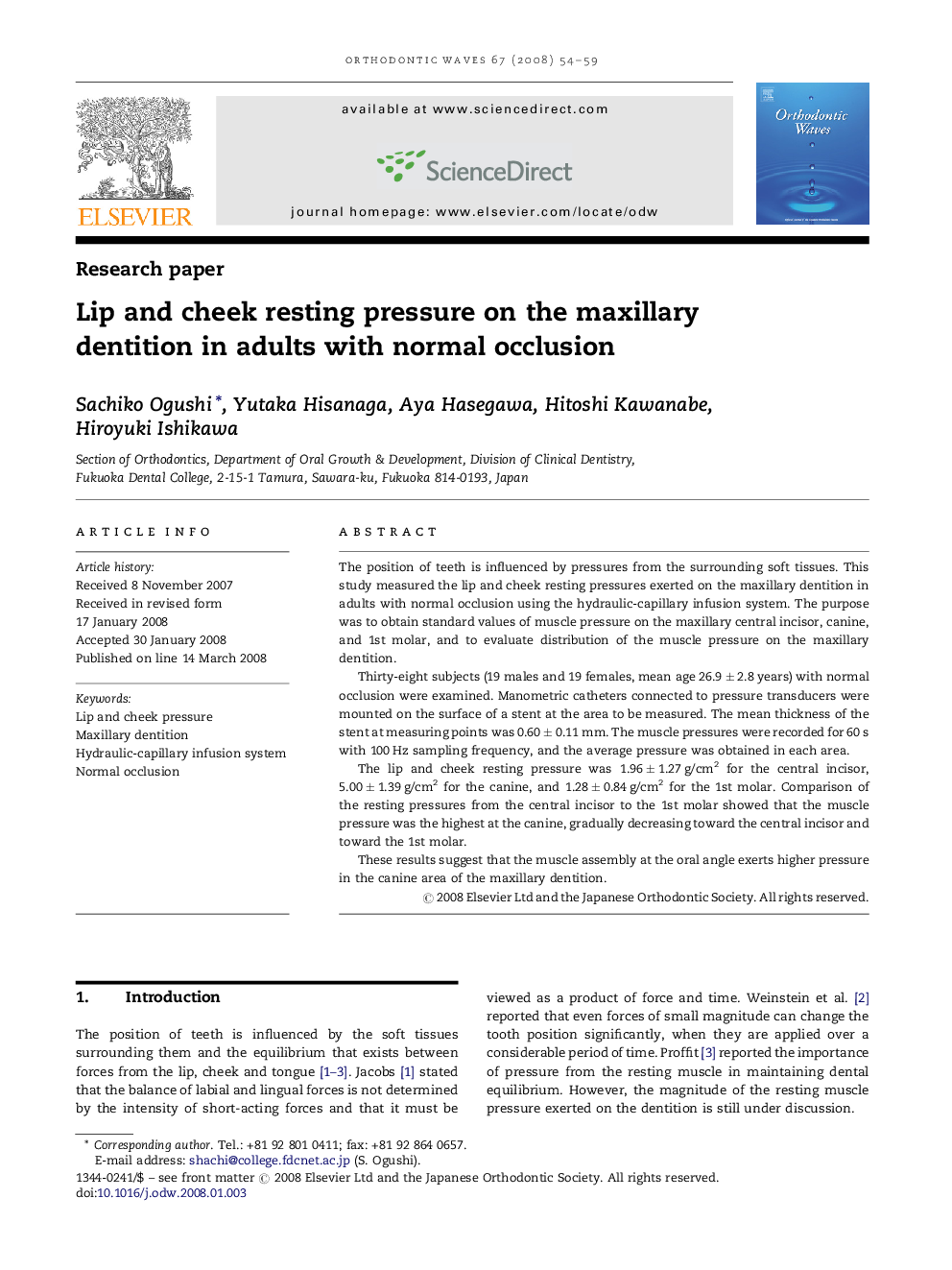| Article ID | Journal | Published Year | Pages | File Type |
|---|---|---|---|---|
| 3170733 | Orthodontic Waves | 2008 | 6 Pages |
The position of teeth is influenced by pressures from the surrounding soft tissues. This study measured the lip and cheek resting pressures exerted on the maxillary dentition in adults with normal occlusion using the hydraulic-capillary infusion system. The purpose was to obtain standard values of muscle pressure on the maxillary central incisor, canine, and 1st molar, and to evaluate distribution of the muscle pressure on the maxillary dentition.Thirty-eight subjects (19 males and 19 females, mean age 26.9 ± 2.8 years) with normal occlusion were examined. Manometric catheters connected to pressure transducers were mounted on the surface of a stent at the area to be measured. The mean thickness of the stent at measuring points was 0.60 ± 0.11 mm. The muscle pressures were recorded for 60 s with 100 Hz sampling frequency, and the average pressure was obtained in each area.The lip and cheek resting pressure was 1.96 ± 1.27 g/cm2 for the central incisor, 5.00 ± 1.39 g/cm2 for the canine, and 1.28 ± 0.84 g/cm2 for the 1st molar. Comparison of the resting pressures from the central incisor to the 1st molar showed that the muscle pressure was the highest at the canine, gradually decreasing toward the central incisor and toward the 1st molar.These results suggest that the muscle assembly at the oral angle exerts higher pressure in the canine area of the maxillary dentition.
